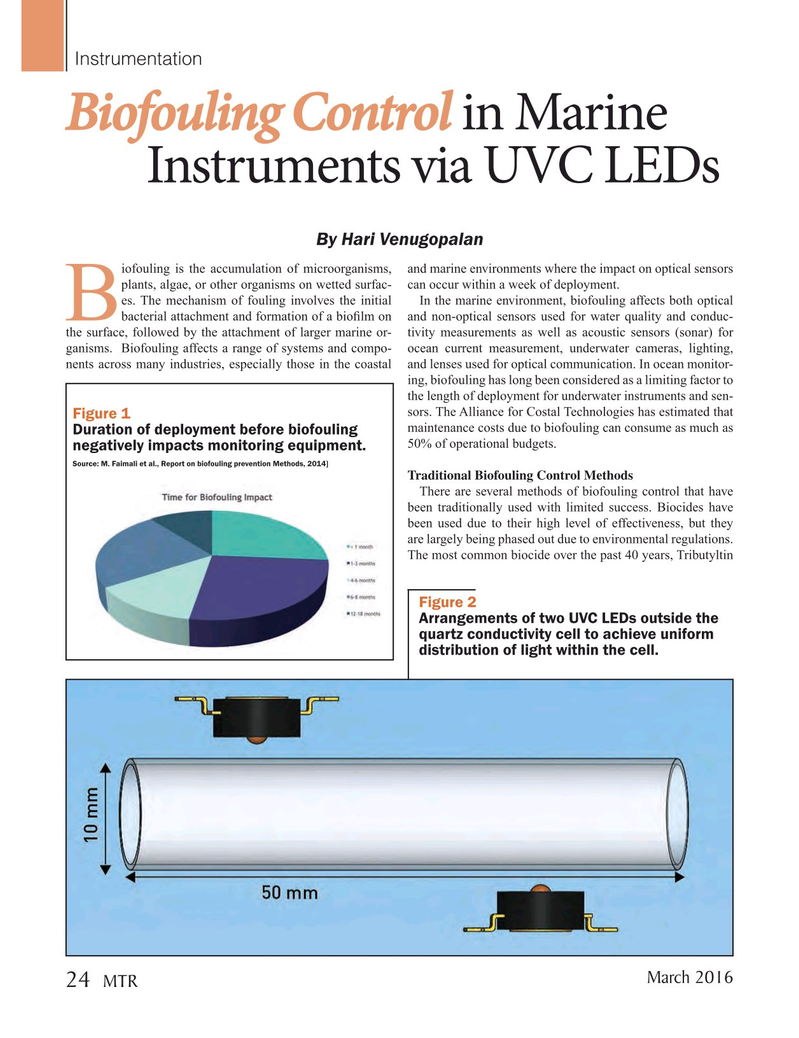
Page 24: of Marine Technology Magazine (March 2016)
Oceanographic Instrumentation: Measurement, Process & Analysis
Read this page in Pdf, Flash or Html5 edition of March 2016 Marine Technology Magazine
Instrumentation
Biofouling Control in Marine Instruments via UVC LEDs
By Hari Venugopalan iofouling is the accumulation of microorganisms, and marine environments where the impact on optical sensors plants, algae, or other organisms on wetted surfac- can occur within a week of deployment.
es. The mechanism of fouling involves the initial In the marine environment, biofouling affects both optical
Bbacterial attachment and formation of a bio? lm on and non-optical sensors used for water quality and conduc- the surface, followed by the attachment of larger marine or- tivity measurements as well as acoustic sensors (sonar) for ganisms. Biofouling affects a range of systems and compo- ocean current measurement, underwater cameras, lighting, nents across many industries, especially those in the coastal and lenses used for optical communication. In ocean monitor- ing, biofouling has long been considered as a limiting factor to the length of deployment for underwater instruments and sen- sors. The Alliance for Costal Technologies has estimated that
Figure 1 maintenance costs due to biofouling can consume as much as
Duration of deployment before biofouling 50% of operational budgets.
negatively impacts monitoring equipment.
Source: M. Faimali et al., Report on biofouling prevention Methods, 2014]
Traditional Biofouling Control Methods
There are several methods of biofouling control that have been traditionally used with limited success. Biocides have been used due to their high level of effectiveness, but they are largely being phased out due to environmental regulations.
The most common biocide over the past 40 years, Tributyltin
Figure 2
Arrangements of two UVC LEDs outside the quartz conductivity cell to achieve uniform distribution of light within the cell.
March 2016 24 MTR
MTR #2 (18-33).indd 24 2/19/2016 11:08:04 AM

 23
23

 25
25
